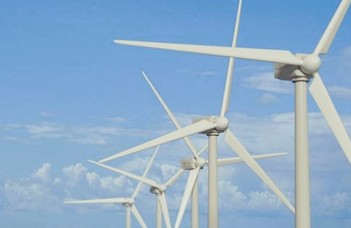Dynamics and Aerodynamics of Structures Research Group

Dynamics and Aerodynamics of Structures Research Group
Research activities focus on the dynamics and aerodynamics of such engineering structures as suspended cables and transmission line conductors or wind turbine blades. These structures are exposed to dynamic loads due to several reasons including wind, icing conditions, or other external intervention. Natural phenomena may result in harmful vibration that reduces the range of operation and lifetime of these structures, which justifies the effort to develop solutions for diminishing the undesired consequences of the vibration. Models are developed to understand the conditions of high-frequency and high-amplitude cable motion, and to assess the damages that such vibrations may cause. This activity contributes to proposing solutions in order to attenuate the vibration, and consequently, protect the structure. Application of vibration control may lead to irregular cable motion that requires the detailed study of the dynamics of such systems. Further models are constructed to examine the aerodynamics of bare and iced wind turbine blades. Such study helps predict the effects of icing conditions on the wind turbine performance, and contributes to improving the blade profile so that the influence of extreme weather conditions is minimized.
The research activity described above involves the following tasks:
Numerical and experimental study of vortex-induced vibration of a flexible cable with geometric nonlinearities


Vortex-induced vibration may be modelled on a suspended flexible cable where periodic excitation is applied by a shaker. Alternatively, flexible cable is modelled by rigid cylinder with elastic suspension, which is exposed to airflow in a wind tunnel. Measured parameters are the displacement and force components during the resulting vibration.
Areas of application: transmission line conductors, cable-stayed bridges, mooring.
https://doi.org/10.1007/978-3-031-47152-0_16
https://doi.org/10.1016/j.jfluidstructs.2023.103958
Modelling cable vibration and application of vibration control in order to reduce amplitude of cable vibration and the dynamic forces acting on the cable

Dynamic processes are modelled theoretically, numerically and experimentally on a laboratory model of one or two spans of a transmission line. Displacements and forces are measured by an optical displacement sensor and by load cells at a suspension point, respectively. Vibration amplitude may be reduced by a vibration absorber or by vibration control applied at a suspension point.
Publications:
https://doi.org/10.1007/978-3-031-45709-8_87
https://doi.org/10.1016/j.coldregions.2022.103504
https://doi.org/10.1177/09544062211005801
https://doi.org/10.1007/s40435-020-00711-1
Study the dynamics of digitally controlled cable vibration including sampling delay and backlash at the driving


Time delay always occurs in digital control, because samples of data are taken at discrete time intervals and response is provided after the sampling delay. Backlash influences control when the direction of control force changes, since the control force is not transmitted in the small domain of backlash. Vibration control significantly reduces vibration amplitude, but sampling delay leads to limitation of applicability. Sampling delay and backlash together results in a piecewise linear system, which may result in irregular motion.
Publications:
https://doi.org/10.1007/s11012-022-01627-0
Numerical simulation and wind-tunnel experiments of icing of a wind turbine blade with varying ambient conditions

Publications:
https://doi.org/10.1016/j.ijmultiphaseflow.2024.105022 10.32973/jcam.2024.002
Aerodynamic study of iced wind turbine blades, exploring the effects of blade shape on the profile of ice accretion, on the aerodynamic forces and on the wind turbine performance

Ice accretion on wind turbine blades influences the aerodynamic performance and the power production of the wind turbine. Inverse design methodology is applied to modify the blade shape so that the aerodynamic performance degradation is reduced and the range of operation of wind turbine is extended. Numerical simulations assess the mass and shape of ice accreted on the blade and the aerodynamic coefficients under various icing conditions.
Publications
https://doi.org/10.1016/j.enconman.2018.11.015
Mathematical modelling and numerical study are supported by software available including Matlab, Ansys Fluent, Ansys Fensap-Ice, but own codes are also developed and applied.

Equipment available in the Dynamics Laboratory for experimental study includes a small-scale model of a transmission line equipped with load cells and displacement sensors, with the possibility of attaching a shaker to apply excitation, and with removable weights for load shedding tests.


The Fluid Dynamics Laboratory includes an icing wind tunnel with sensors to measure flow parameters and with a Phase Doppler Particle Analyzer to measure velocity and size of droplets or particles in two-phase flows.


Head of group: Prof. Dr. László E. Kollár, DSc, Full Professor
Senior researchers: Dr. Tibor Borbély, Associate Professor
Kristóf Lajber, Assistant Lecturer
Junior researchers: Ibrahim Kipngeno Rotich, PhD student
MSc and BSc students involved in short projects
The research group is involved in the following projects:
- Security and data protection in the fields of material technology, industry 4.0 and energy engineering (2022-2025, pillar 3 in the project no. TKP2021-NVA-29 “Protection of high integrity national services and industrial infrastructures using cybersecurity, technological and legislative instruments”)
- Vibration control of transmission lines (2022-2023, “Mecenatúra” project no. 141334)
- Innovative processing technologies, applications in energy engineering, and wide-range microstructure investigation techniques (2017-2021, workgroup 5 in the project EFOP-3.6.1-16-2016-00018 “Improving the role of research + development + innovation in the higher education through institutional developments assisting intelligent specialization in Sopron and Szombathely”)
- Moawad, A., Kollár, L. E., Bognár, A., Borbély, T., Lajber, K. (2023) ‘Buckling of interphase spacers during vibration following ice shedding‘, Cold Regions Science and Technology, 213, pp. 103904:1–103904:10. https://doi.org/10.1016/j.coldregions.2023.103904
- Kollár, L. E. (2023) ‘Dynamics of digitally controlled forced vibration of suspended cables‘, Meccanica, 58, pp. 25–42. https://doi.org/10.1007/s11012-022-01627-0
- Kollár, L. E. (2022) ‘Ice-shedding-induced vibration of conductors with active vibration control‘, Cold Regions Science and Technology, 196, pp. 103504:1–103504:10. https://doi.org/10.1016/j.coldregions.2022.103504
- Meng, Y. and Kollár, L. E. (2021) ‘Dynamic analysis of electrical vibration absorbers for suspended cables‘, Proceedings of the Institution of Mechanical Engineers, Part C: Journal of Mechanical Engineering Science, 235(24), pp. 7445–7455. https://doi.org/10.1177/09544062211005801
- Kollár, L. E. and Mishra, R. (2019) ‘Inverse Design of Wind Turbine Blade Sections for Operation under Icing Conditions‘, Energy Conversion and Management, 180, pp. 844–858.
http://smi.inf.elte.hu/laboratechnika/

